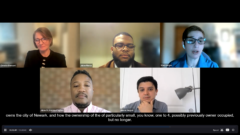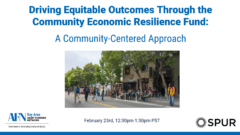Federal and state governments have allocated billions of dollars to help small businesses, with much of that money now going to new funding models intended to reach business owners that have historically been denied access to resources. In California, millions of dollars have been allocated to develop a new model for building equitable economies, with the state’s Community Economic Resilience Fund (CERF) focusing on building equitable and sustainable economies that work for all Californians. At the same time, efforts to democratize public finance have been gaining momentum across the country. Participatory budgeting, a process where community members decide how to spend a public budget, has emerged as an effective strategy for making public spending more equitable.
On July 12, Bay Area AFN and SPUR presented the second installment of our series to discuss the CERF model, as well as tools and strategies for how funders, CBOs, and community members can help allocate resources to promote equity. We explored:
- How engaging communities can drive more equitable allocation of federal & state dollars;
- Successful models showing how federal and state funds are used to make investments that advance racial equity and help all people – particularly Black and brown communities harmed the most by the pandemic; and
- Opportunities for philanthropy to make strategic investments that support longer-term solutions that advance equity.
Panelists
Jay Banfield / All Home California
Christa Brown / San Francisco Foundation
Kristania De Leon / Participatory Budgeting Project
Jacob Denney / SPUR



